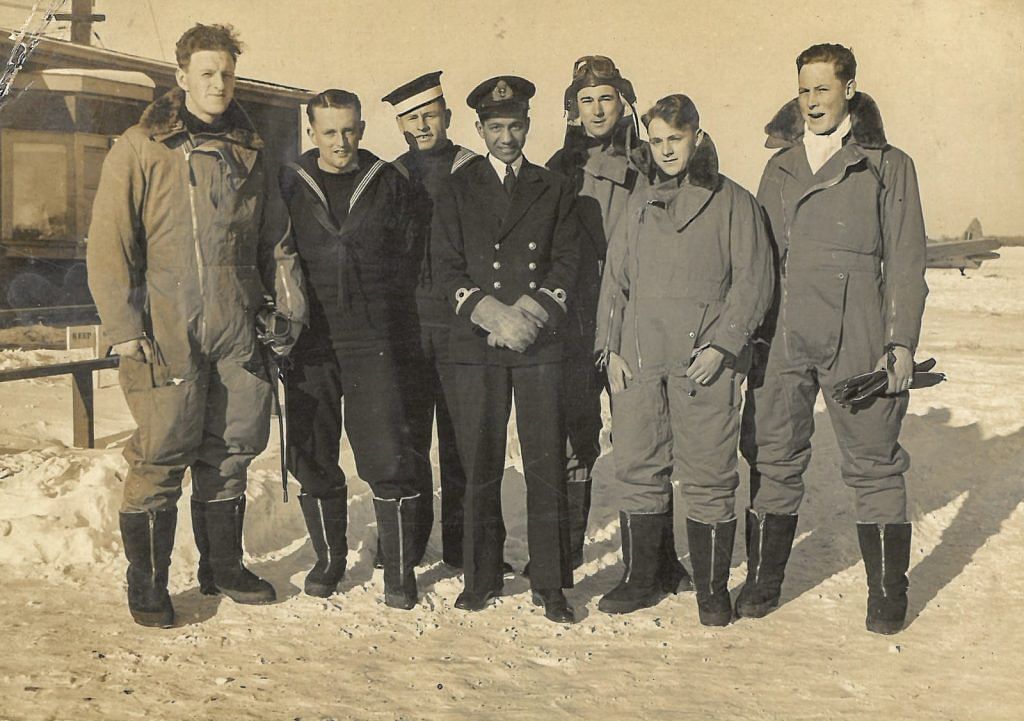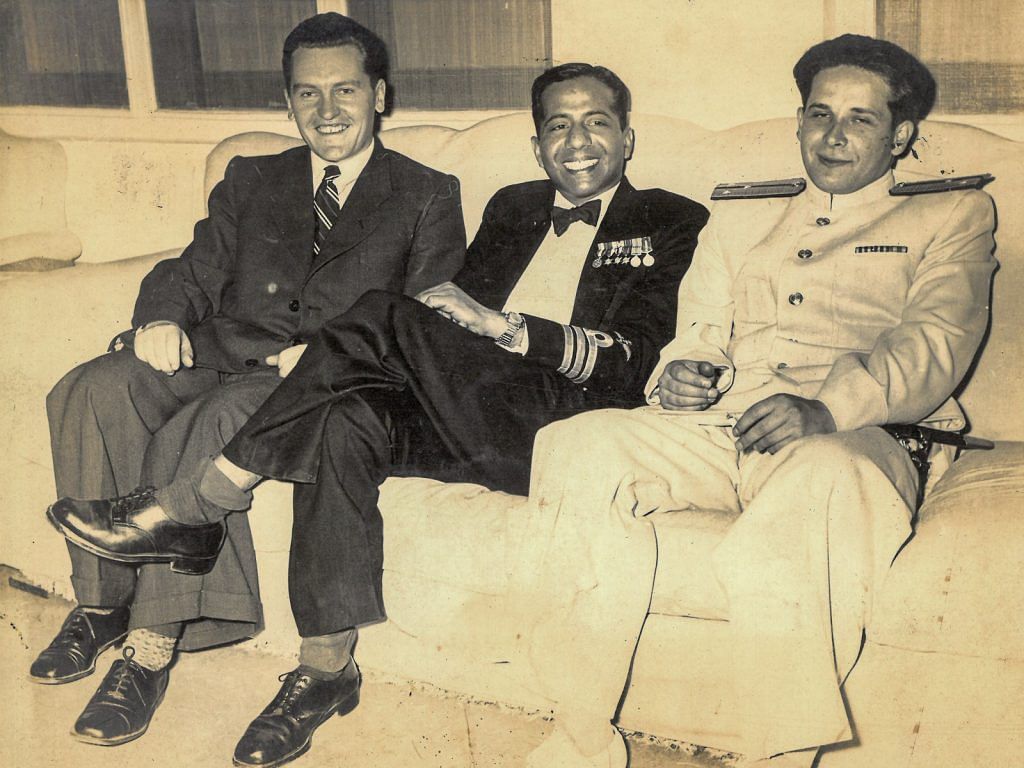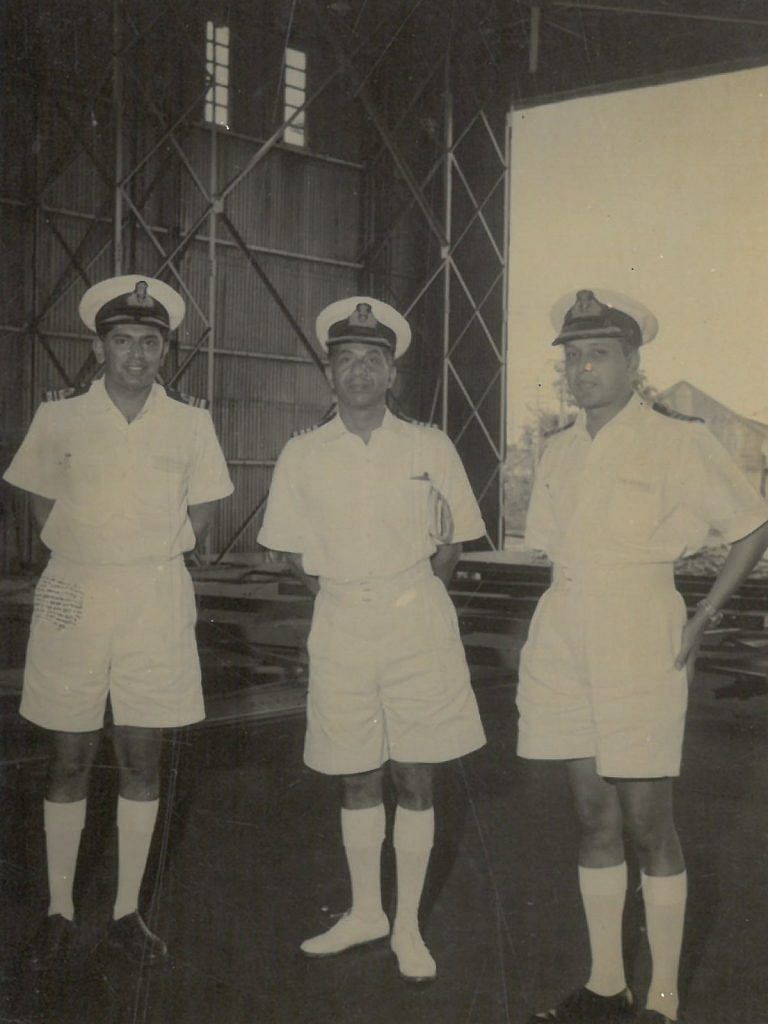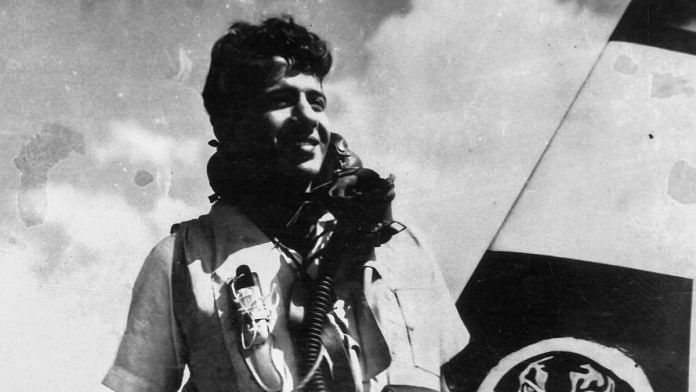Of the pioneer aviators of the Indian Navy, few are as important to the birth of the naval air arm as Commodore Yaduvansh Narayan Singh, and none as singular in their accomplishments. Not only was he the very first Indian naval aviator, he was also the first Indian carrier pilot, the first Indian ever to pilot a helicopter, the first to qualify on amphibious seaplanes, and the first to command an Indian naval air squadron. And somewhere in the middle of all this, he also found time to be a vital contributor in drafting the earliest plans for naval aviation after Independence.
So, in more ways than one, Commodore Y.N. Singh had set the foundations for a strong naval aviation.
Naval Aviation’s finest hour
When one thinks of ‘naval aviation’ in the Indian context, particularly these days, the mind goes straight to the 1971 War — the incredible operations conducted by the aircraft carrier INS Vikrant and its embarked Sea Hawk fighters, and Alizé anti-submarine aircraft. The fighters of INAS 300 ‘White Tigers’ flew some 160 sorties against airfields, harbours, enemy shipping and targets of opportunity ashore and at the sea, and the Alizés of INAS 310 ‘Cobras’ conducted the Navy’s first night strikes, and claimed several enemy gunboats of their own, over some 290 sorties through the war.
Nine Naval Aviators were honoured with the Vir Chakra for their part in the 1971 operations, including the Commanding Officer (CO) and Senior Observer of INAS 310, and Lt Arun Prakash (later Admiral and Navy Chief) flying Hunters with No. 20 Squadron IAF in the western theatre. The CO of Vikrant, Capt Swaraj Prakash, and CO INAS 300, Lt Cdr S.K. Gupta were awarded the Maha Vir Chakra, and the crew of Vikrant earned a further two Vir Chakras as well.
For these, and other sterling contributions to the nation in times of war and peace over 68 years, Indian Naval Aviation was awarded President’s Colours on 6 September 2021 at INS Hansa, Goa.
The stellar performance of Naval Aviation over the years is owed to the visionary leadership of the Indian Navy, which pursued air power at sea right from Independence. These dogged efforts bore modest fruit in 1953, with the arrival of the Navy’s first aircraft, the Short Sealand amphibian, and commissioning of the first Naval Air Station, INS Garuda in Cochin. Commissioned before independence into the Royal Indian Navy (RIN), Y.N. Singh was central to these early years of Indian Naval Aviation.
Also Read: Field Marshal KM Cariappa, the man who told Pakistan not to release his captured son
WW II career
Born 1 November 1922 in Meghaul, Bihar, Yaduvansh Narayan Singh joined the training ship Dufferin at Bombay in January 1938, and then the Royal Indian Navy (RIN) in November 1940. This took him to the Royal Naval College in Dartmouth, England in 1941, from where he proceeded as a Midshipman in the Mediterranean fleet in October 1941. His tenure was eventful — after serving in the Second Battle of Sirte in March 1942, he then survived the sinking of the destroyer HMS Jackal in May 1942 by German Ju 88s from Lehrgeschwader 1 (Training Wing 1) flying from Crete. The latter feat earned Singh a Mention in Despatches before he was finally commissioned as an Acting Sub-Lieutenant in May 1943.

November 1944. | Photo Credit: Special Arrangement
Singh’s performance in the Mediterranean, among other factors, led the Admiralty to select him for flying training upon his return to the United Kingdom in October 1943. He was packed off to No. 13 Elementary Flying Training School (13 EFTS) at Saint-Eugène in Quebec, Canada, to begin flying on the Fleet Finch biplane. Singh then moved on to Harvard trainers at Kingston, Ontario, where he was awarded wings in November 1944. The following month he returned to England and converted to Grumman Wildcat and Hellcat carrier fighters.
On 16 January 1945, Y.N. Singh was promoted to Lieutenant rank and posted for operational flying to the British East Indies Fleet at Trincomalee in Ceylon. He worked up ashore, then embarked the escort carrier HMS Ameer with 804 Naval Air Squadron (804 NAS) flying Grumman Hellcat IIs in July 1945. Ameer formed part of Force 63, alongside sister Ruler-class escort carrier Empress, the battleship Nelson, cruiser Sussex, and destroyers Paladin, Rotherham, Racehorse and Raider. These capital ships would provide cover to Force 63’s minesweeping flotilla, comprising HMS Plucky, Pincher, Vestal, Rifleman, and HMIS Punjab and Deccan. The force set sail on 19 July for Operation Livery, which was planned as the first of a series of operations to retake the Malayan peninsula, but would turn out to be the last major action of the War for the East Indies Fleet.
Force 63 began operations off Phuket, Thailand, on 24 July, with the two carriers flying an intense 150 sorties in just three days, principally attacking surface targets on and around the Kra Isthmus. This was also where Lt Y.N. Singh had his baptism by fire, tangling with a Japanese kamikaze aircraft (type unknown) and emerging unscathed — the first Indian Naval Aviator to see combat action. By the end of the month, the Force returned to Trincomalee, having lost two minesweepers during the operation.
In August 1945, Ameer and her embarked squadrons, including 804 NAS, were to commence Operation Carson, an attack on Penang in Malaysia and Medan on the island of Sumatra, but the surrender of Japan forestalled any further action. Y.N. Singh celebrated Victory over Japan Day (V-J Day) with the Royal Navy in Trincomalee harbour instead.
Also Read: 1962, IPKF to Balakot, Ladakh – India’s record in writing factual military history is poor
Post-War duties of Y.N. Singh
By October 1945, Y.N. Singh was posted to HMIS Kistna for his watchkeeping qualification. Here, he participated in the Indian Naval Mutiny of February 1946, the only commissioned officer to do so. In a letter he wrote in his later years, he recalled, “The day the revolt broke out at Port Blair, I was supposed to take over as OOD. The national flag was already at the mast head. I refused to take over my duty at 0800 and was placed under cabin arrest with sentries outside my cabin. So began the glorious day of life — a day which proved to be full of revolutionary ardour. It was my plan to take command of the 37th MS [Minesweeper] Flotilla on Kistna and proceed to Bombay to join my patriotic brethren and make a common cause with them.”
In the tumult of Independence, he seemed to have escaped any serious repercussions for his actions, and it was also at this juncture that a somewhat hilarious episode occurred. It turned out that when he had been selected for flying training back in 1943, it was not with any lofty intention of seeding some sort of aviation cadre for the Indian Navy — those plans were nowhere on the horizon at the time. Instead, his flying career was intended to be the first step towards developing an inter-service understanding for combined operations against the Japanese for Malayan landing operations that never happened, owing to the Japanese surrender. RIN headquarters, which had been debited by the Admiralty for the cost of Singh’s training, was not amused at what they viewed as a superfluous (and pricey) specialisation — to the extent that they hounded the hapless aviator to contribute toward this unplanned expenditure.
Haphazard though it was, Y.N. Singh’s specialisation was to pay off only a few short years later. As a Lieutenant Commander, he was posted as Staff Officer (Air) at NHQ from 1947 to 1949, where he was instrumental in compiling the requirements of the fleet air arm in the Navy’s very first post-Independence plan paper. Singh worked alongside Commander (later Admiral) A.K. Chatterjee, the first Director of Naval Plans, Lieutenant Commander (later Vice Admiral) Nilakanta Krishnan, Staff Officer Plans, with Wing Commander (later Air Chief Marshal) P.C. Lal as a technical advisor. Under the visionary Commodore Martin Henry St Leger Nott, Chief of Staff to the RIN Commander-in-Chief, the ‘Outline Plan for the Reorganisation and Development of the Indian Navy’ called for a Navy centred around a minimum of two light carriers, with attendant embarked and fleet support aircraft. Although it would take years for the plan to bear fruit, it is without question the kernel from which Naval Aviation has grown to what it is today.
Y.N. Singh continued to fly during his NHQ stint, albeit mainly IAF Spitfire variants, as he was only qualified on fighters and the Navy had no aircraft yet. In March 1949, he was sent to the UK for a two-year advanced flying training course (with higher-ups in the loop this time), where he became the first Indian ever to fly a helicopter. Returning with unimpeachable flying qualifications, having successfully completed twin-engine conversion, instrument training and helicopter conversion, he did a few tenures at sea as Executive Officer (XO) of INS Magar and INS Ranjit.
While Singh was burnishing his credentials with advanced flying, the first Naval Aviators of Independent India were also in the UK earning their wings and catching up. When Lieutenants P.N. Parasher, Balbir Law, T Chakraverti and R.S. Sokhi returned to India in 1952, they were all equally qualified as their senior trailblazer. Meanwhile, financial considerations severely curtailed funding for Naval Aviation, resulting in approval for only one Fleet Requirement Unit (FRU) in 1951. Short Sealand amphibians were contracted from the UK the following year, and it was only natural that Y.N. Singh would command the Navy’s first flying unit. The first Sealand was handed over to the Indian Navy on 13 January 1953, and the aircraft began ferrying to India. On 11 March 1953, the FRU was commissioned at INS Venduruthy II, with two Sealands and five pilots under Lt Cdr Y.N. Singh. He was double-hatted as Commander (Air) of the base as well, continuing in the role after the airfield was re-commissioned as INS Garuda, the Navy’s first air station, on 11 May 1953.
Now in the rank of Commander, he took over INS Garuda from October 1955 to October 1957, and oversaw infrastructure improvements and set up new shore establishments such as the School for Naval Airmen (SFNA), which continues to train officers and sailors to this day. He converted to jets with the IAF at Hakimpet in the winter of 1957, and after commanding the destroyer INS Ranjit, he was designated as Commander (Air) for the Navy’s first aircraft carrier in November 1959. On 4 March 1961, Singh notched another milestone as the commissioning Commander (Air) of INS Vikrant, where he oversaw a flawless embarkation and workup of the ship’s squadrons over two months of intensive flying in the Mediterranean before the carrier arrived in India.

As a Captain, Y.N. Singh was Director of Air Staff Division (now the Directorate of Naval Air Staff) at Naval HQ for an unprecedented tenure, from April 1962 through December 1967, which coincided with a period of consolidation and modest expansion for Naval Aviation, including additional Sea Hawks for the carrier and induction of the first helicopters — which he had flown more than a decade before. The period also overlapped with two wars, and although Naval aviators were denied the chance to engage the enemy, INAS 310 carried out vital reconnaissance over land.
After a brief eight-month stint as Naval Officer in Charge (NOIC), Goa, in 1968, he served as the Director, National Cadet Corps, for Kerala and Lakshadweep, then Bihar until 1972, when he retired in the rank of Commodore. After retirement, he spent a number of years in Communist politics with the Communist Party of India (Marxist) in Bihar, before the untimely death of his younger brother, Vice Admiral SBN Singh, pushed him to turn to family life in 1996. Commodore Y.N. Singh passed away in Patna on 21 December 2001, after suffering a brain haemorrhage at the age of 79.

station. | Photo credit: Special Arrangement
It is impossible, and indeed it would be incorrect, to lay credit for the foundation of Indian Naval Aviation at the feet of any one person, particularly in the early days, when the idea had strong buy-in across the board, including from non-aviators. Certainly, stalwarts like Commodore George Douglas, slightly senior to Y.N. Singh, also gave up a lot to shepherd Naval Aviation through its infancy. But today, as the Naval Air Arm celebrates the President’s Colour, looks forward to brand new multirole helicopters, and moves ever closer to that ultimate goal of becoming a credible two-carrier force, spare a thought for Yaduvansh Narayan Singh, the man who was first to tick all those boxes over half-a-century ago.
The author is indebted to Capt Bharat Singh, son of Cmde Y.N. Singh, for the images and much of the information contained in this article.
Angad Singh (@zone5aviation) is a Project Coordinator with the Strategic Studies Programme at the Observer Research Foundation, and co-author of ‘Fly Navy, Fly’ (2021), a comprehensive history of Indian Naval Aviation. Views are personal.
This is part of a series on military biographies.
(Edited by Srinjoy Dey)






